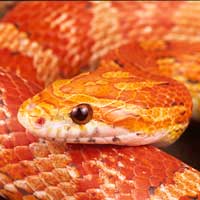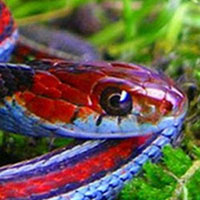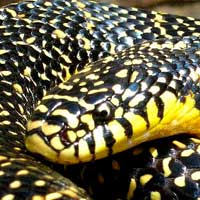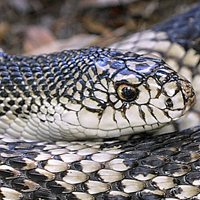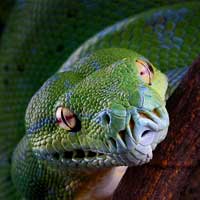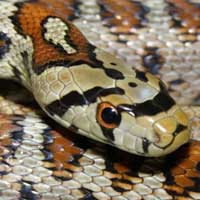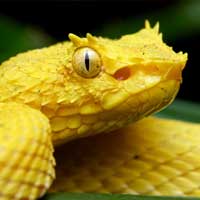Everything You Need to Know About the Coastal Carpet Python
The scientific name of the Coastal Carpet Python is Morelia spilota mcdowelli, and it belongs to the Pythonidae family, which includes non-venomous constricting snakes commonly referred to as pythons.
Scientific Name: Morelia spilota mcdowelli
Snake Family: Pythonidae
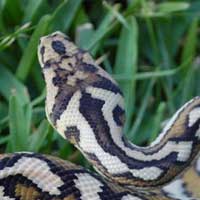
Introduction to the Coastal Carpet Python
The Coastal Carpet Python (Morelia spilota mcdowelli) is a non-venomous snake native to eastern Australia. Known for its stunning patterned scales and manageable size, this python is a favorite among reptile enthusiasts. Its adaptability and relatively docile nature make it an excellent choice for experienced keepers. In this guide, we’ll explore the Coastal Carpet Python’s habitat, diet, behavior, health, reproduction, and care needs in detail.
Where Does the Coastal Carpet Python Live?
The Coastal Carpet Python thrives in a variety of environments across its native range. Understanding its natural habitat is essential for replicating its living conditions in captivity.
- Geographic Range: Found along the eastern coast of Australia, from Queensland to New South Wales.
- Preferred Habitat: Rainforests, woodlands, savannas, and urban areas.
- Climate: Warm and humid, with moderate seasonal temperature variations.
| Region | Habitat Type | Key Features |
|---|---|---|
| Queensland | Rainforests | High humidity, dense vegetation |
| New South Wales | Woodlands | Scattered trees, moderate rainfall |
| Urban Areas | Suburban backyards | Adaptable to human environments |
Diet and Feeding Habits of the Coastal Carpet Python
The Coastal Carpet Python is a carnivorous predator with a diet that varies depending on its age and size. In captivity, its feeding habits are straightforward to manage with proper planning.
- Natural Diet: Small mammals, birds, and reptiles.
- Feeding Frequency:
- Juveniles: Every 5-7 days.
- Adults: Every 10-14 days, depending on size and activity level.
- Captive Feeding Tips:
- Offer thawed, pre-killed prey to prevent injury to the snake.
- Ensure prey size matches the widest part of the snake’s body.
- Feed in a separate enclosure to avoid substrate ingestion.
Behavior and Temperament of the Coastal Carpet Python
The Coastal Carpet Python is known for its calm demeanor and adaptability. Understanding its behavior can enhance your experience as a keeper.
- Activity Patterns: Nocturnal, with peak activity during the evening and night.
- Defensive Behavior: Typically non-aggressive but may hiss or strike when threatened.
- Interaction with Humans: Tolerates handling well when accustomed to regular interaction.
With consistent handling and proper care, the Coastal Carpet Python can become a docile and manageable pet.
Health and Lifespan of the Coastal Carpet Python
The Coastal Carpet Python can live 20-30 years in captivity when provided with proper care. Maintaining its health involves creating an optimal environment and monitoring its condition regularly.
- Common Health Issues:
- Respiratory infections due to low humidity or poor ventilation.
- Shedding problems (dysecdysis) caused by insufficient humidity.
- Parasitic infestations such as mites or ticks.
- Preventive Measures:
- Maintain humidity levels between 50-70%.
- Provide a temperature gradient with a basking spot of 88°F-92°F.
- Keep the enclosure clean and conduct regular health checks.
Reproduction and Breeding of the Coastal Carpet Python
The Coastal Carpet Python is oviparous, laying eggs after mating. Breeding them in captivity requires attention to environmental conditions and careful monitoring.
- Mating Season: Typically during the cooler months of the year.
- Clutch Size: 10-30 eggs per clutch.
- Incubation Period: 60-70 days at 86°F-88°F.
- Breeding Tips:
- Simulate seasonal temperature drops to trigger breeding behavior.
- Provide a nesting box with appropriate substrate for egg-laying.
- Monitor incubation conditions to ensure healthy hatchlings.
Handling and Caring for a Coastal Carpet Python
Handling and caring for a Coastal Carpet Python requires knowledge, patience, and consistency. With proper care, this snake can thrive in captivity and become a rewarding pet.
- Enclosure Requirements:
- Minimum size: 4’ x 2’ x 2’ for adults.
- Include secure hides, climbing branches, and a water dish for soaking.
- Maintain a temperature gradient for thermoregulation.
- Handling Tips:
- Handle gently and support the snake’s entire body.
- Avoid handling during shedding or immediately after feeding.
- Wash hands before and after handling to maintain hygiene.
By meeting their specific needs, the Coastal Carpet Python can thrive and provide years of enjoyment for its keeper.

